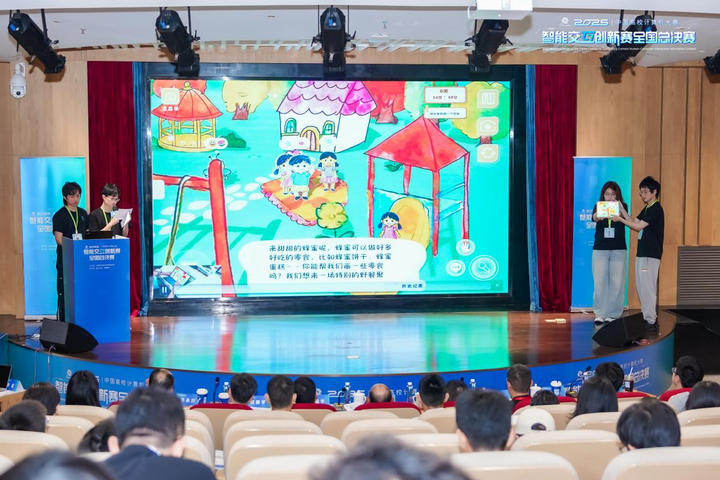Helping AI Better Understand Context: Principles and Practice of MCP

MCP (Model Context Protocol): A Standard for AI Interaction with Tools and Data
MCP is a unified protocol standard for enabling AI models to interact with external data sources and tools — similar to giving AI a USB-C–style universal interface.
This article explores the essence, value, usage, and development of MCP, complete with practical code and implementation examples.
---
I. What is MCP?
1. MCP — An Open, Consensus-Based Protocol
MCP is an open, general, consensus-based protocol led by Anthropic (Claude).
- Provides a standardized interface for AI models to connect seamlessly with various data sources and tools.
- Designed to replace fragmented agent integrations, reducing complexity and improving security.
- Helps developers avoid reinventing the wheel by leveraging a shared, open-source MCP ecosystem.
- Maintains context across apps and services for autonomous task execution.
> Analogy: MCP works like USB-C for AI — once you have a single standard, you can connect to everything.
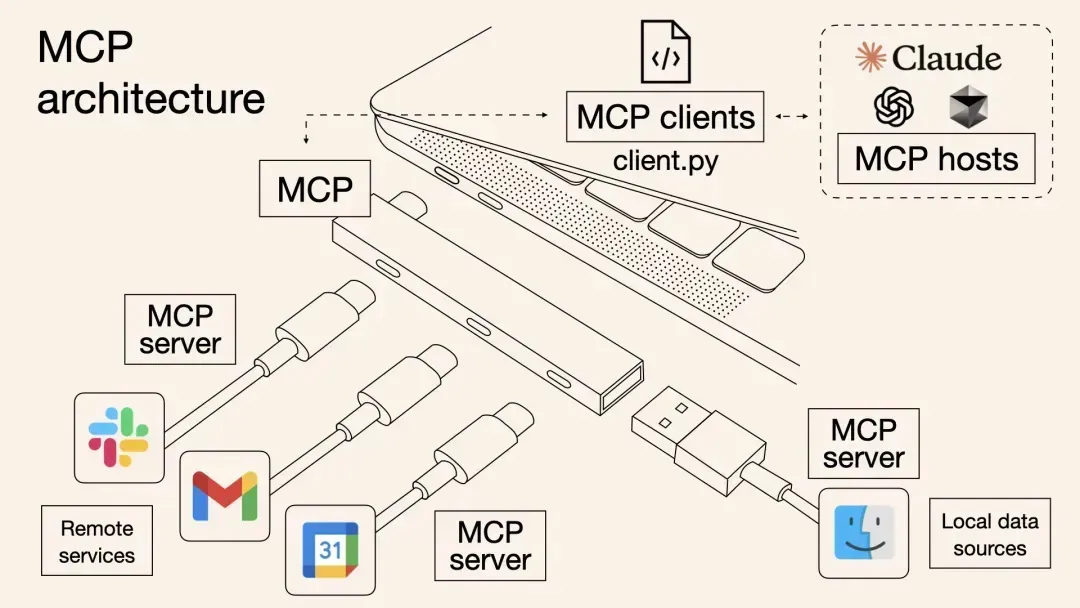
---
2. Core MCP Architecture
MCP follows a client–server model:
- MCP Hosts – AI applications (e.g., chatbots, AI IDEs).
- MCP Clients – Components within hosts maintaining direct server connections.
- MCP Servers – Provide context, tools, and prompts to clients.
- Local Resources – Files, databases on the local machine.
- Remote Resources – APIs, external data sources.
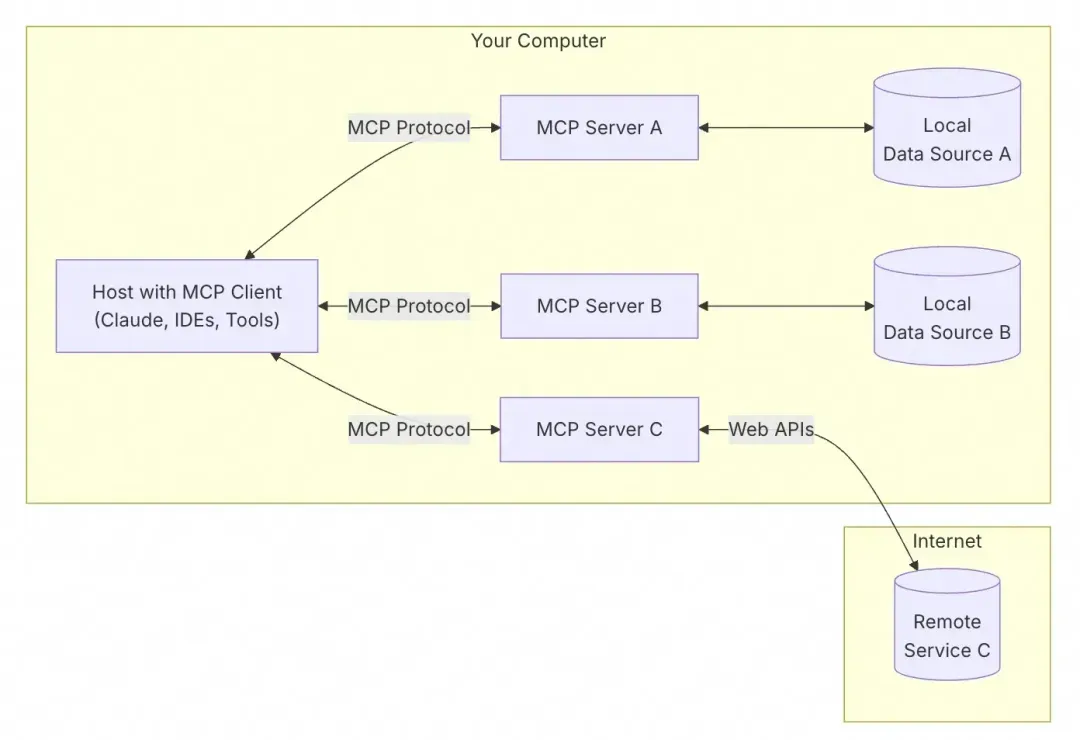
---
3. Why MCP is Needed
MCP solves the problems of fragmentation and integration complexity by:
- Standardizing AI–tool interoperability.
- Scaling AI-driven solutions without rewriting code for every integration.
- Enabling secure local processing without sending all data to the cloud.
---
II. Real-World Need for MCP
Without MCP, it’s nearly impossible to:
- Search the web
- Send email
- Publish a blog
- Query a database
- All in one unified AI session
With MCP, integrating these capabilities into a single application becomes achievable.
Example Development Workflow With MCP:
- Query local database with AI in your IDE.
- Search GitHub Issues for bugs.
- Send PR feedback via Slack.
- Retrieve and modify AWS/Azure configs.
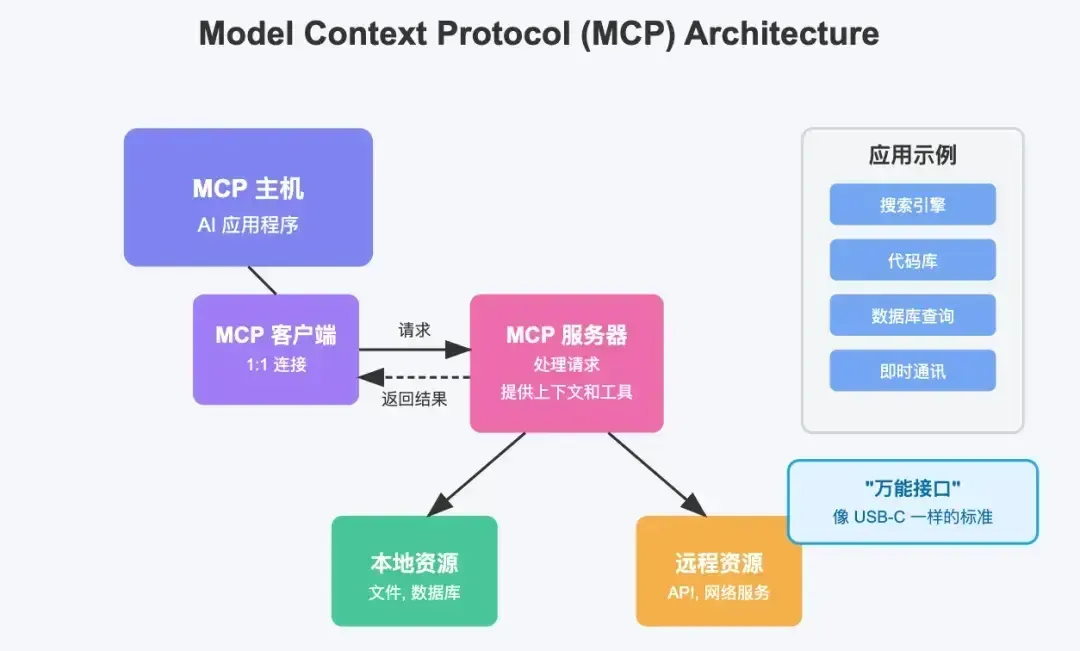
---
Everyday Example:
“Find the average score for the latest math exam, list failing students in the duty roster, and remind them about the retake in the WeChat group.”
With MCP:
- AI reads local Excel file.
- AI connects to WeChat.
- AI updates online document.
- No manual steps.
- Data remains local and secure.
---
Benefits:
- No need for separate interfaces per app.
- Works locally without cloud uploads.
- AI maintains richer context.
---
III. MCP Principles
1. MCP vs. Function Calls
Before MCP:
- Function calls tied to specific LLM platforms.
- Developers rewrite code when switching models.
- Security and compatibility issues.
MCP Advantages:
- Ecosystem – Any service provider can add MCP-compatible tools.
- Compatibility – Works with any model that supports MCP.
---
2. How Models Choose Tools in MCP
Invocation Process:
- Client sends query to LLM.
- LLM analyzes available tools.
- Client executes chosen tool via MCP server.
- Execution result returned to LLM.
- LLM processes and replies naturally.
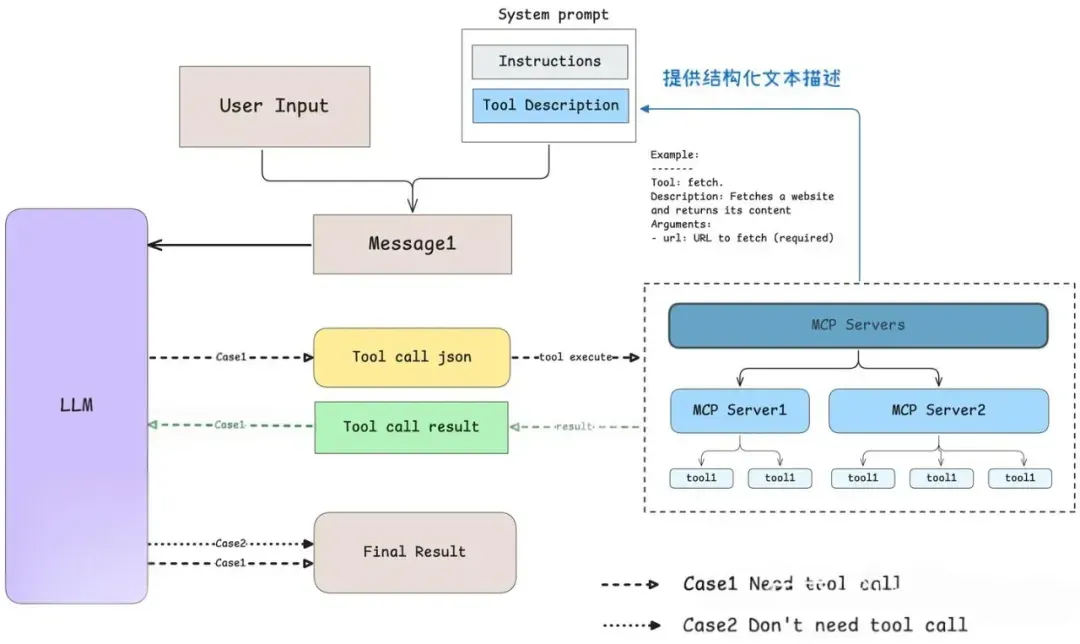
---
Example Code – Tool registration and description formatting:
class Tool:
"""Represents a tool with its properties and formatting."""
def __init__(self, name: str, description: str, input_schema: dict[str, Any]) -> None:
self.name = name
self.description = description
self.input_schema = input_schema
def format_for_llm(self) -> str:
"""Format tool information for LLM."""
args_desc = []
if "properties" in self.input_schema:
for param_name, param_info in self.input_schema["properties"].items():
arg_desc = f"- {param_name}: {param_info.get('description', 'No description')}"
if param_name in self.input_schema.get("required", []):
arg_desc += " (required)"
args_desc.append(arg_desc)
return f"""
Tool: {self.name}
Description: {self.description}
Arguments:
{chr(10).join(args_desc)}
"""---
Best Practices:
- Precise tool names.
- Clear docstrings.
- Accurate parameter descriptions.
---
IV. Tool Execution & Result Feedback
Execution Flow:
- If no tool is needed → reply directly.
- If a tool is needed → output JSON call → client executes tool → return result to LLM → generate final reply.
Error handling:
- Invalid tool calls are skipped.
- Safe handling of hallucinations.
---
V. MCP Server Development
1. MCP Server Types
- Tools – External functions or service calls.
- Resources – Structured data the LLM can read.
- Prompts – Task templates for the user.
---
2. Quick Start Example – Python MCP Server
Goal: Count `.txt` files on desktop and list their names.
Prerequisites:
- Claude Desktop
- Python 3.10+
- MCP SDK 1.2.0+
Setup:
curl -LsSf https://astral.sh/uv/install.sh | sh
uv init txt_counter
cd txt_counter
echo "3.11" > .python-version
uv venv
source .venv/bin/activate
uv add "mcp[cli]" httpx
touch txt_counter.py---
Server Implementation:
import os
from pathlib import Path
from mcp.server.fastmcp import FastMCP
mcp = FastMCP("Desktop TXT File Counter")
@mcp.tool()
def count_desktop_txt_files() -> int:
"""Count the number of .txt files on the desktop."""
username = os.getenv("USER") or os.getenv("USERNAME")
desktop_path = Path(f"/Users/{username}/Desktop")
return len(list(desktop_path.glob("*.txt")))
@mcp.tool()
def list_desktop_txt_files() -> str:
"""Get a list of all .txt filenames on the desktop."""
username = os.getenv("USER") or os.getenv("USERNAME")
desktop_path = Path(f"/Users/{username}/Desktop")
txt_files = list(desktop_path.glob("*.txt"))
if not txt_files:
return "No .txt files found on desktop."
file_list = "\n".join([f"- {file.name}" for file in txt_files])
return f"Found {len(txt_files)} .txt files:\n{file_list}"
if __name__ == "__main__":
mcp.run()---
Testing:
$ mcp dev txt_counter.py
Starting MCP inspector...
Proxy server listening on port 3000Open browser at `http://localhost:5173` to inspect.
---
Claude Integration:
Add to `claude_desktop_config.json`:
{
"mcpServers": {
"txt_counter": {
"command": "/opt/homebrew/bin/uv",
"args": [
"--directory",
"/Users/you/mcp/txt_counter",
"run",
"txt_counter.py"
]
}
}
}Restart Claude Desktop → MCP ready for use.
---
VI. Summary
MCP delivers:
- Essence: Standardized AI connection to tools and data (AI’s USB-C).
- Value: Cross-model compatibility, minimal rework, secure local execution.
- Usage: Rich ready-to-use ecosystems for users; simple dev process for programmers.
MCP’s future depends on ecosystem growth — more MCP-compliant tools increase AI’s potential.
---
Tip: If you integrate MCP into a wider content automation workflow, consider open-source platforms like AiToEarn官网 — which connects AI generation, multi-platform publishing, analytics, and model ranking into one framework. Perfect for monetizing MCP-powered workflows across Douyin, Bilibili, Instagram, X (Twitter) and more.
Links:

